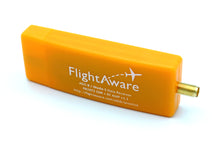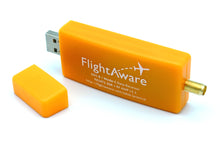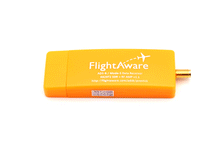Software Defined Radio USB dongle designed to be used with a Raspberry Pi and an antenna to create an ADS-B receiver that will allow you to track aircraft up to 250NM away. Using FlightAware’s open-source software you can receive data from either 1090 MHz or 978 UAT equipped aircraft and have it displayed in a web-based radar-like interface.
- 20dB Integrated amplifier which can increase your ADS-B range 20-100% more compared to other dongles
- Requires FlightAware ADS-B Filter or modified dump1090 gain settings
- Contains R820T2 and RTL2832U chips
- USB powered, 5V @ 300mA






